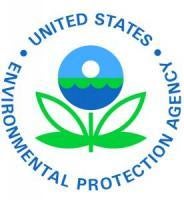MIAMI (September 10, 2017) – U.S. Environmental Protection Agency (EPA) continues to coordinate closely with local, state and federal partners as the Agency prepares to respond to the impact of Hurricane Irma. EPA teams are formed and ready to deploy to Florida once the conditions are safe for travel and field work. Agency teams will be deploying out of the Region 4 office in Atlanta and their ability to travel to affected areas may be impacted as the storm continues to move north. The Agency continues to have staff in Tallahassee, Palm Beach County, Broward County and Miami-Dade County to ensure close coordination and direct lines of communication.
EPA is co-located and actively working with our state and federal partners at the Florida State Emergency Operations Center (SEOC) in Tallahassee. This includes working directly beside our Florida Department of Environmental Protection (FDEP) colleagues.
EPA will ensure every Superfund site that is impacted by the storm is inspected. We are adjusting the priority list in real-time along with the storm's changing path and in coordination with our state partners. In most cases, post-storm assessments are only conducted once tropical storm force winds cease. Assessment takes many forms and is a partnership between EPA and state and local officials who will help determine site access and prioritization.
Hurricane Irma made landfall in Monroe County, Florida, earlier today as a major category 4 hurricane. Florida is serviced by EPA Region 4. Irma has already impacted Puerto Rico and the U.S. Virgin Islands, covered by EPA Region 2.
As of September 10, 2017, the following information is available:
REGIONAL OPERATIONS CENTERS
- Region 4: The Region has approximately 44 personnel involved in emergency response efforts. In addition, 7 people are deployed to Florida, including Regional Administrator Trey Glenn to the SEOC in Tallahassee.
- The Region 4 Water Protection Division (WPD) has been notified that the U.S. Corps of Engineers (USACE) intends to issue an ESF-3 (Public Works and Engineering) sub-task to the EPA, which will support drinking water and wastewater facility assessments.
- EPA is maintaining communication with the State of Georgia to determine if an EPA representative is needed at the ESF-10 Desk in the SEOC in Atlanta.
- Due to the shifting path and movement of Irma, deployment of Assessment Teams has been delayed until conditions are more certain and safe for travel and field operations.
- Region 2: About 70 personnel are currently involved in hurricane efforts and assessment teams deployed to Puerto Rico and the U.S. Virgin Islands and conducting operations.
- EPA deployed on-scene coordinators on Saturday to St. Croix to conduct debris assessment within the USVI, as well as to USVI and Puerto Rico to conduct damage assessments. More personnel are being deployed today.
RISK MANAGEMENT PLANS (RMPS)
- EPA is communicating with the Risk Management Program (RMP) and Facility Response Plan (FRP) bulk oil facilities to ensure they are secure and identify any vulnerabilities.
- EPA’s Remedial program is currently performing desk-top triage of all remedial sites in Region 4 coastal states.
- EPA Region 4 is preparing a Site-Specific Data Management Plan for the incident.
ENFORCEMENT ACTIONS AND FUEL WAIVERS
- Florida has requested and today EPA has issued a No Action Assurance (NAA) for Tampa Electric Company’s Big Bend Station, Polk Power Station and Bayside Power Station for compliance with air permit condition to ensure adequate supply of electric power.
- On Friday, EPA issued an NAA to allow emergency and backup electric generating units in Monroe County, Florida, the county that encompasses the Florida Keys, to operate without meeting all pollution controls in order to facilitate the supply of needed electricity during and after Hurricane Irma.
- EPA policy allows the agency to issue NAAs in cases where it is necessary to avoid extreme risks to public health and safety and where no other mechanism can adequately address the matters.
- Last week, EPA extended a low-volatility conventional gasoline waiver through September 26, 2017, in 38 states and the District of Columbia.
- EPA also issued a Red-Dye Diesel fuel waiver for vehicles used for emergency response and evacuations.
REGION 2 SUPERFUND SITES, OIL SITES AND OTHER FACILITIES
- EPA assessed 23 Superfund and oil sites in Puerto Rico and the U.S Virgin Islands to evaluate their vulnerabilities prior to Hurricane Irma hitting.
- As of today, EPA Region 2 has conducted post-hurricane assessments of 7 of these facilities and sites and found no significant damage.
- A complete list of Superfund and oil sites has been generated to prioritize post-hurricane visits.
- A list of other regulated facilities was also created to conduct pre- and post-storm facility coordination and assessment.
- EPA teams will focus on immediate threats from hazardous substance releases and oil spills, orphan hazardous containers, household hazardous waste, contaminated debris, and drinking water/wastewater issues.
REGION 4 SUPERFUND SITES, OIL SITES AND OTHER FACILITIES
- The EPA Region 4 Remedial program has completed rapid assessment (desk-top triage) of all 90 remedial sites within the state of Florida.
-
Although not a Superfund site, EPA state partner FDEP is actively monitoring the New Wales Mosaic operating phosphorus mining facility in Hillsborough County and all of the facilities that maintain gypsum stacks. FDEP worked proactively, communicating with these facilities ahead of the storm.
-
Like the various other facilities identified for post-landfall assessment by the Hazardous Assessment Response Team and other response teams, this facility and others like it will be properly assessed to ensure there are no potential adverse impacts to human health and the environment.
- Cabot Koppers and Airco Plating Company are groundwater remediation sites and the vulnerability was identified as a disruption in pump and treat should flooding occur.
- Tyndall Air Force Base was determined to be low vulnerability as it is still in the Remedial Investigation/Feasibility Study stage (no remediation occurring).
- Homestead Air Force Base was rated as high due to potential for structural damage (similar to what occurred during Hurricane Andrew in 1992).
- There are no above ground concerns with the Cabot Koppers and Airco Plating sites. These sites are being monitored for groundwater restoration. The monitoring aspects of the groundwater at these sites will be assessed after the hurricane passes to verify any impacts.
- Both Tyndall and Homestead Air Force Bases have been contacted and they will inform us immediately if they experience impacts from the hurricane. The public cannot access these facilities without authorization from the Air Force. These sites are very secure.
- No active remediation is occurring at these sites.
- If any site in the path of the storm is found to pose an immediate threat to nearby populations, EPA will immediately alert local officials.
- If cleanup activity is on-going at a site, EPA will instruct the on-site contractor to secure the site immediately. This includes evacuating personnel, ceasing all activity and securing equipment and other potentially harmful materials. If no activity is currently occurring at the site, the site is considered secured but remains closely monitored.
- After the storm passes, floodwaters recede and it is deemed safe to enter a site, EPA remedial managers and contractors conduct rapid assessments of sites based on priority to identify any damage and initiate cleanup plans if necessary.
For the original posting from EPA, visit: News Releases from Headquarters EPA Hurricane Irma Update for Sunday, September 10, 2017




 />i
/>i

